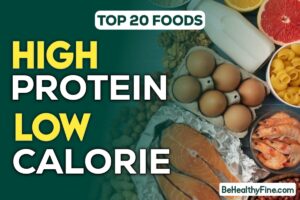How to Stop Breast Cancer from Growing
Breast cancer is a pervasive and potentially life-threatening condition that affects millions of women worldwide. Understanding the growth and progression of breast cancer cells is crucial in devising preventive strategies and treatment plans to combat this disease.
When Breast Cancer Starts?
Breast cancer starts when abnormal cells in the breast begin to grow uncontrollably. These cells typically form a tumor that can often be felt as a lump in the breast. While the exact cause remains unknown, various risk factors contribute to its development, including genetic predisposition, hormonal influences, and environmental triggers.
Understanding the Growth of Breast Cancer Cells
Genetic Factors
Certain genetic mutations, such as mutations in the BRCA1 and BRCA2 genes, increase the risk of developing breast cancer. Genetic testing and counseling can help individuals understand their risk and take preventive actions. Mutations in key genes like BRCA1 and BRCA2 heighten the likelihood of breast cancer.
Genetic testing is crucial, enabling individuals to grasp their susceptibility and consider preventive measures. Counseling complements this by providing guidance on risk comprehension and empowering informed decisions, fostering proactive approaches to managing and reducing the risk of breast cancer.
Hormonal Influences
Hormones like estrogen and progesterone can affect the growth of some breast cancers. Hormone receptor tests can identify cancers sensitive to hormones, guiding treatment decisions. Estrogen and progesterone hormones wield significant influence over certain breast cancers’ growth.
Hormone receptor tests play a pivotal role in identifying cancers responsive to these hormones, aiding in treatment decisions. By determining the hormone sensitivity of the cancer, these tests help doctors tailor treatments, such as hormone therapy, more precisely, ensuring a more targeted and effective approach in managing the disease.
Environmental Triggers
Exposure to environmental factors like radiation, certain chemicals, and unhealthy lifestyle choices can contribute to the growth of breast cancer cells.
Exposure to various environmental factors, including radiation, specific chemicals, and unhealthy lifestyle choices, can significantly contribute to the development and progression of breast cancer cells. Radiation exposure, whether from medical treatments or environmental sources, may increase the risk of breast cancer.
Causes of Breast Cancer
Breast cancer can be caused by various factors, both genetic and environmental. Some of the key causes include:
- Genetic Mutations: Inherited genetic mutations, such as BRCA1 and BRCA2 gene mutations, can significantly increase the risk of developing breast cancer. These mutations can be passed down through generations in some families.
- Hormonal Factors: Changes or imbalances in hormone levels, especially estrogen and progesterone, can contribute to the development of breast cancer. Women with prolonged exposure to estrogen due to early menstruation, late menopause, or hormone replacement therapy have a slightly higher risk.
- Age and Gender: As individuals age, their risk of breast cancer increases. Additionally, being female is a significant risk factor, although breast cancer can occur in men as well, albeit less frequently.
- Personal History and Lifestyle Choices: Previous incidents of breast cancer or certain non-cancerous breast diseases can elevate the risk. Unhealthy lifestyle habits like excessive alcohol consumption, smoking, obesity, and a sedentary lifestyle may also contribute to an increased risk of breast cancer.
- Environmental and External Factors: Exposure to ionizing radiation, such as radiation therapy for other cancers, increases the risk of breast cancer. Additionally, exposure to certain chemicals found in the environment or workplace may play a role in the development of breast cancer, although more research is needed to establish clear links.
- Family History: Having close relatives (parents, siblings, or children) who have had breast cancer can increase an individual’s risk. However, most cases of breast cancer are not directly linked to inherited genetic factors.
Understanding these potential causes can help individuals take proactive steps to minimize their risk factors and adopt healthier lifestyle choices, contributing to the prevention or early detection of breast cancer. Regular screenings and consultations with healthcare professionals are crucial in managing and reducing the risk of breast cancer.
Symptoms of Breast Cancer
The symptoms of breast cancer can vary among individuals, but common signs to be aware of include:
- Lump or Thickening: Feeling a lump or thickening in breast or underarm area.
- Change in Breast Size or Shape: Any noticeable change in size or shape of the breast.
- Changes in the Skin: Skin changes on the breast, such as redness, dimpling, or puckering.
- Nipple Changes: Changes in the nipple, such as inversion, discharge (other than breast milk), or a new nipple position.
- Breast Pain: Unexplained pain in the breast or nipple area that doesn’t go away.
- Swelling: Swelling or tenderness in the breast or underarm area.
It’s important to Know that these symptoms can also be caused by conditions other than breast cancer. However, if any of these signs persist or appear unusual, it’s recommended to consult a healthcare professional for a proper evaluation and diagnosis. Regular breast self-examinations and screenings can aid in early detection and improved outcomes in breast cancer treatment.
Preventive Measures and Lifestyle Changes
Adopting a healthy lifestyle significantly reduces the risk of breast cancer. Consuming a balanced diet rich in fruits, vegetables, and whole grains, along with regular exercise, limiting alcohol intake, and avoiding smoking, can contribute to prevention.
If you want to Lose Weight Without Skipping your Favorite Meals, Then [Watch this Video]
Early Detection and Screening
Regular self-examinations for any changes in the breasts and scheduling mammograms and other imaging tests as recommended by healthcare professionals aid in early detection, leading to better treatment outcomes.
Medical Interventions and Treatments
Various treatment options exist depending on the stage and type of breast cancer, including surgery, chemotherapy, radiation therapy, and targeted therapy. These treatments aim to remove or destroy cancer cells while minimizing harm to healthy cells.
Supportive Therapies and Holistic Approaches
Psychological support, complementary therapies like acupuncture or meditation, and lifestyle adjustments play a pivotal role in managing the emotional and physical effects of breast cancer and its treatments.
Research Advances and Promising Techniques
Ongoing research explores innovative treatments like immunotherapy and personalized medicine based on genetic testing, offering hope for more effective and tailored approaches to combating breast cancer.
Conclusion
In the fight against breast cancer, prevention, early detection, and advancements in treatment methods are crucial. By understanding the factors influencing its growth and taking proactive measures, individuals can significantly reduce their risk and enhance their chances of successful treatment.
Thankyou For Read This Article, You can Read other Recent Posts






